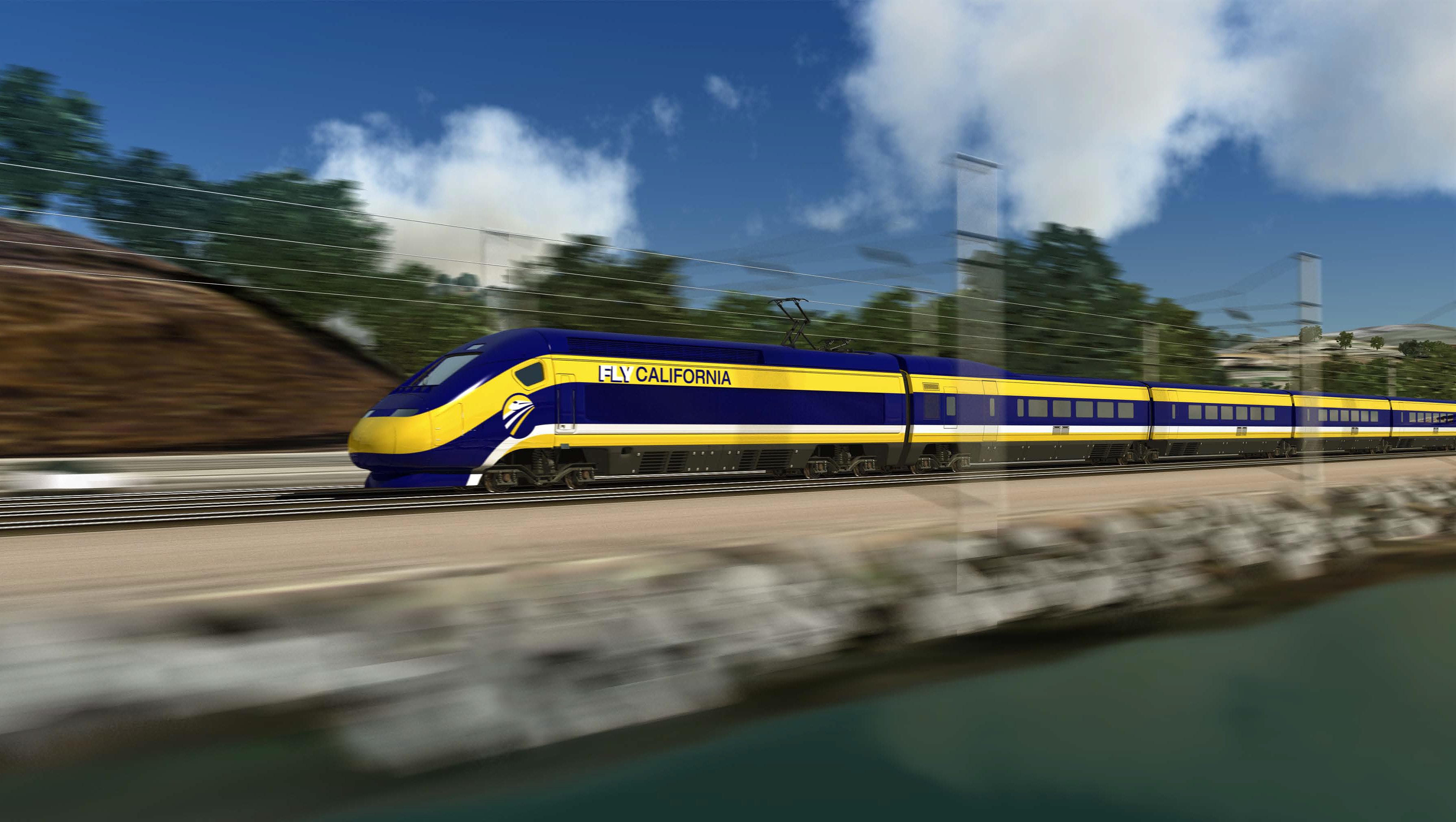By Steven Greenhut.
California’s ongoing “high-speed rail” project connecting Los Angeles with San Francisco continues to run up against the same, recurring problem since voters gave the plan initial bond funding in a 2008 statewide initiative. There’s a growing chasm between the promises supporters made to the state’s taxpayers – and reality.
In the latest bombshell, a confidential federal report points to cost overruns of at least 50 percent on the easiest, mountain-less leg of this complex infrastructure undertaking. The Federal Railroad Administration analysis, obtained by the Los Angeles Times last week, detailed a variety of other problems within the state’s rail administration, as well.
For instance, the project already is at least seven years behind schedule in building the first segment, which connects Merced in the northern part of the San Joaquin Valley to Shafter, a small town just north of Bakersfield in the southern part of the valley. That section was supposed to be completed this year, but isn’t slated for completion until 2024.
“The federal document outlines far-reaching management problems: significant delays in environmental planning, lags in processing invoices for federal grants and continuing failures to acquire needed property,” according to the Times. Rail officials said the numbers are just projections, but the newspaper described the assessment as “a troubling critique by an agency that has been a stalwart supporter and longtime financier of the nation’s largest infrastructure project.”
There’s a two-fold problem here. The project faces increasing cost overruns – and its supporters continue to rely on funding sources that are far from secure. “In its 2012 draft business plan, the Authority identifies the federal government as by far the largest potential funding source for the program, yet the plan provides few details indicating how the authority expects to secure this money,” explained the California State Auditor in a 2012 follow-up report.
That was a problem during the rail-friendly Obama administration, but is uncertain during a Donald Trump administration. Trump has made favorable comments about bullet trains in general, but congressional Republicans generally have been opposed to California’s high-speed-rail project. This recent report has caused some of them to step up their criticism – and promise oversight hearings and audits – of what they widely view as a boondoggle.
Rail backers seem to have based their plan on the expectation of federal funding that might never be forthcoming. But that’s not the only area where their promises were unrealistic. Former judge and state Sen. Quentin Kopp, the one-time head of the California High-Speed Rail Authority and co-author of the Proposition 1A initiative that brought the project to life, came out against it. “I want to kill this iteration of it because it betrays the representations to the voters in November 2008,” he told the Times’ Patt Morrison, in a 2013 interview.
A series of lawsuits focused on the disparity between the rail authority’s latest iteration of the project and the promises made to voters in 1A in an attempt to do what Kopp suggested and derail the project. To help make a $9.95 billion project palatable to voters, the rail system’s backers offered guarantees within the wording of the initiative. The rail system would, for instance, go from L.A. to San Francisco in a nonstop trip taking 2 hours and 40 minutes. There would be no government subsidies for the operation of the system. The measure promised private investment, low fares and optimistic ridership projections. Yet the current plan is unlikely to live up to its core promises.
A Sacramento County Superior Court judge in 2013 blocked the sale of rail bonds because of those disparities, but the decision was later overruled by an appeals court. Last month, rail officials announced the sale of construction bonds to finance the project, while project opponents filed another lawsuit to stop it. That suit argued that a new rail-related law passed last year to allow bond dollars to be spent on track-electrification also violated the terms of Prop. 1A and amounts to unconstitutional initiative revision that requires another vote of the people. There are other legal fights, also.
Rail authorities have made one substantive change after another. In its draft business plan released last year, the rail agency announced the train would first be routed to the San Jose area before heading over the formidable Tehachapi Mountains and into the Los Angeles basin. “The High Speed Rail Authority is desperate and wants to lay as much track as possible so that it becomes more difficult to stop the project,” said Board of Equalization Vice President George Runner, at the time.
Meanwhile, the agency’s reaction to the Federal Railroad Administration document suggests it is going to keep forging ahead, regardless of costs, in the hopes that a funding source will materialize to complete a project estimated at $64 billion before the latest projected cost overruns. Supporters are counting on revenues from the state’s cap-and-trade auctions and state funding to help keep the project moving ahead, but it remains far shy of full funding.
But as the Times’ Ralph Vartabedian explained, “(The state) Legislature already has balked at giving the rail authority the ability to borrow against future state revenues, saying it would have to make do with existing allocations. And that was before Gov. Jerry Brown warned … that California’s projected 2017-18 budget shows a $1.6-billion deficit.”
It’s already clear based on the rail authority’s own promises that the final project will not resemble the one promised to voters, especially given that the latest plan features a blended route by which bullet trains share tracks with commuter trains in the Los Angeles and San Francisco regions. The courts thus far have approved this disparity between promises and reality, but the increasingly obvious financial disparities might be the hardest ones for rail backers to overcome.
[divider] [/divider]
Originally posted at Cal Watchdog.
Steven Greenhut is Western region director for the R Street Institute. Write to him at sgreenhut@rstreet.org.





